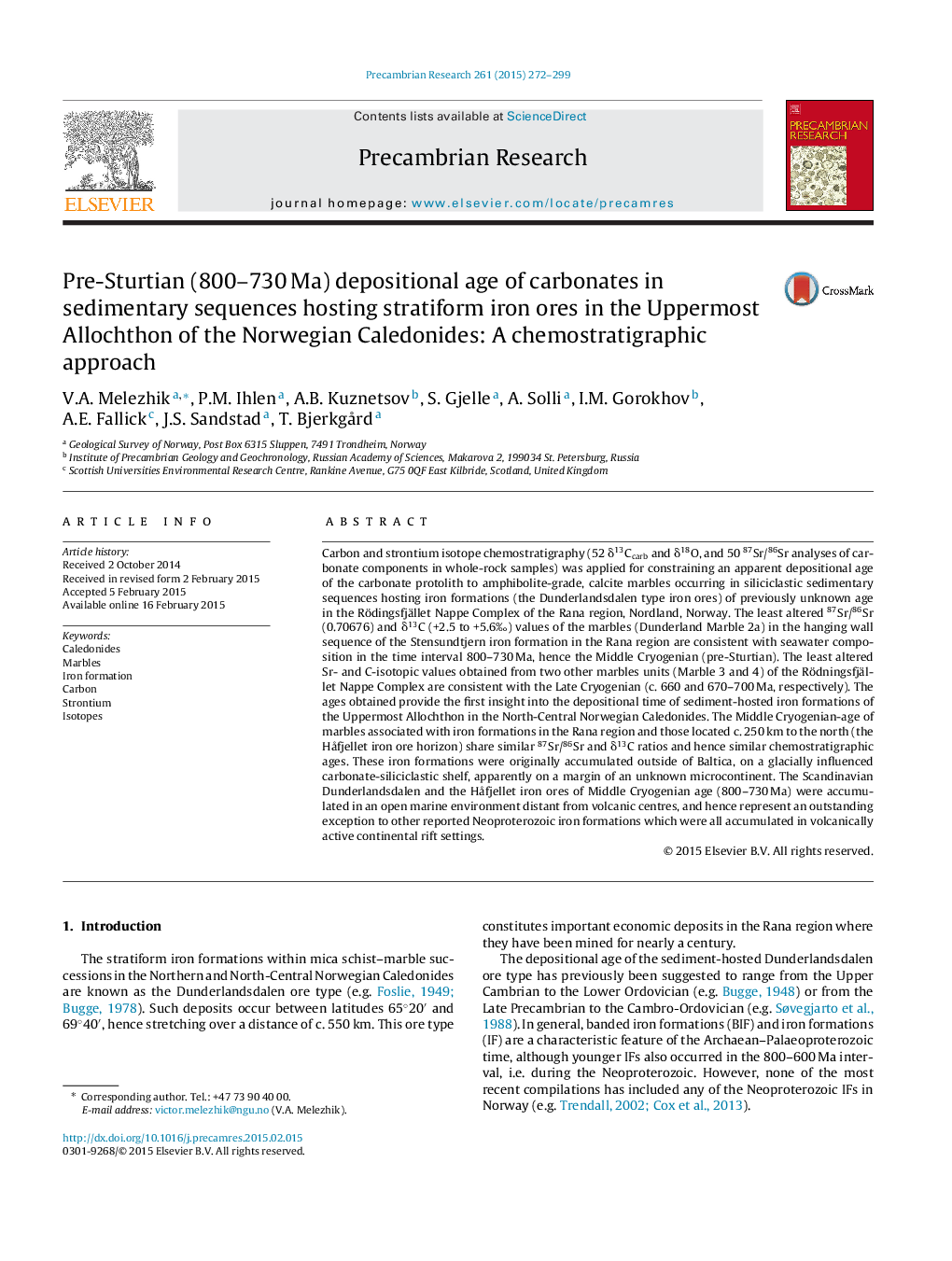| کد مقاله | کد نشریه | سال انتشار | مقاله انگلیسی | نسخه تمام متن |
|---|---|---|---|---|
| 4722724 | 1639614 | 2015 | 28 صفحه PDF | دانلود رایگان |

• Iron formations of the Norwegian Caledonides.
• Deposition in an open marine environment distant from volcanic centres.
• Deposition on a glacially influenced carbonate–siliciclastic shelf.
• Originally accumulated outside of Baltica on a margin of an unknown microcontinent.
• C- and Sr-isotope chemostratigraphy suggests Cryogenian (800–730 Ma) depositional age.
Carbon and strontium isotope chemostratigraphy (52 δ13Ccarb and δ18O, and 50 87Sr/86Sr analyses of carbonate components in whole-rock samples) was applied for constraining an apparent depositional age of the carbonate protolith to amphibolite-grade, calcite marbles occurring in siliciclastic sedimentary sequences hosting iron formations (the Dunderlandsdalen type iron ores) of previously unknown age in the Rödingsfjället Nappe Complex of the Rana region, Nordland, Norway. The least altered 87Sr/86Sr (0.70676) and δ13C (+2.5 to +5.6‰) values of the marbles (Dunderland Marble 2a) in the hanging wall sequence of the Stensundtjern iron formation in the Rana region are consistent with seawater composition in the time interval 800–730 Ma, hence the Middle Cryogenian (pre-Sturtian). The least altered Sr- and C-isotopic values obtained from two other marbles units (Marble 3 and 4) of the Rödningsfjället Nappe Complex are consistent with the Late Cryogenian (c. 660 and 670–700 Ma, respectively). The ages obtained provide the first insight into the depositional time of sediment-hosted iron formations of the Uppermost Allochthon in the North-Central Norwegian Caledonides. The Middle Cryogenian-age of marbles associated with iron formations in the Rana region and those located c. 250 km to the north (the Håfjellet iron ore horizon) share similar 87Sr/86Sr and δ13C ratios and hence similar chemostratigraphic ages. These iron formations were originally accumulated outside of Baltica, on a glacially influenced carbonate-siliciclastic shelf, apparently on a margin of an unknown microcontinent. The Scandinavian Dunderlandsdalen and the Håfjellet iron ores of Middle Cryogenian age (800–730 Ma) were accumulated in an open marine environment distant from volcanic centres, and hence represent an outstanding exception to other reported Neoproterozoic iron formations which were all accumulated in volcanically active continental rift settings.
Journal: Precambrian Research - Volume 261, May 2015, Pages 272–299